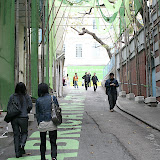
Walking across the ferry platform onto the Central ferry pier, I made my way past the busy sights and sounds of harbour reclamation (see previous post) to go to this exhibition of some sort my friend Irene highly recommended I go to. I didn't know too much in advance what this was all about, but all the better I say, as I hate spoilers. I just need to know that something will be good, and I'll go, and it's a good thing I went.
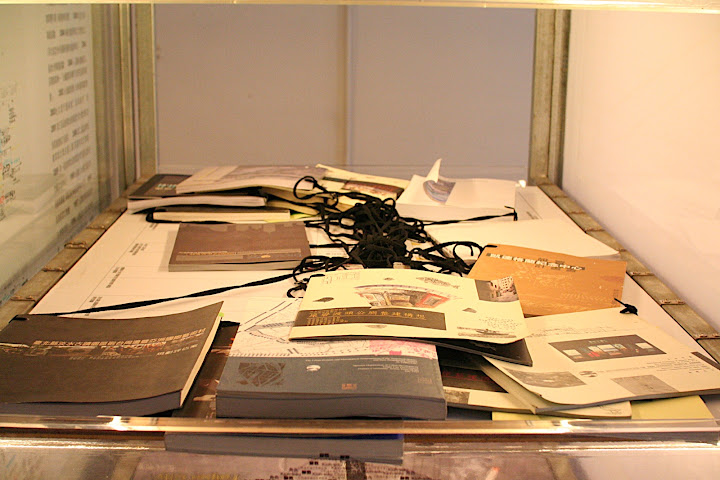
Its basic premise: "Hong Kong & Shenzhen Bi-City Biennale of Urbanism\Architecture". I didn't quite know what a "biennale" is, but turns out it means a large art exhibition. But even though postmodern art was the medium of expression, it was basically that: an urban planning and architecture exhibition.
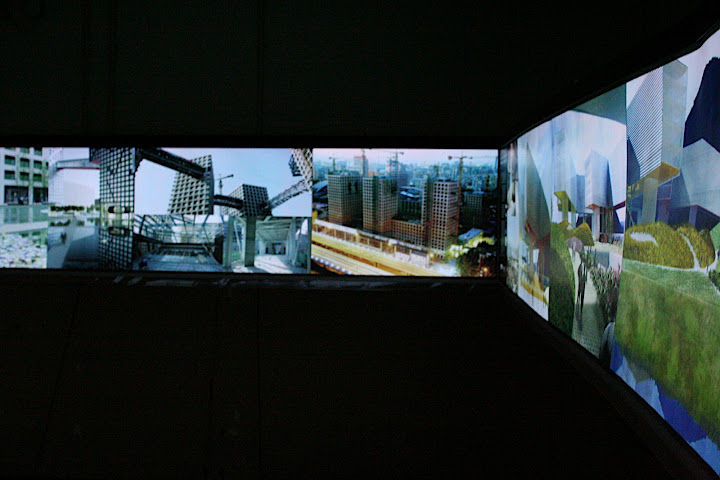
But although hypothetically you could have been an architecture doctorate who came here to treat the exhibit like a library you could pore over, what was more interesting about the place was something else that would keep many Hong Kong people's interests and fascination.
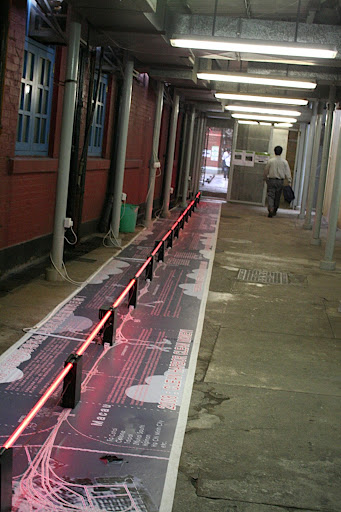
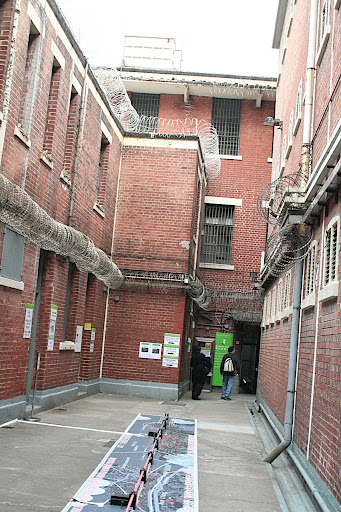
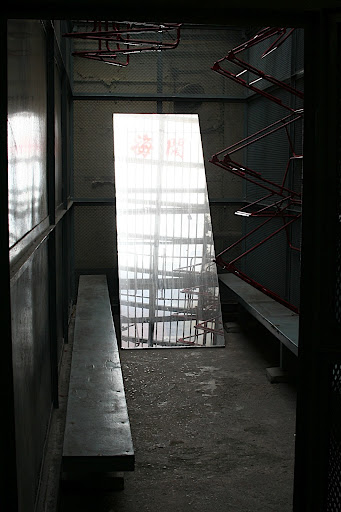 And that's the fact that this biennale was held in the ever-historical compound that was formerly the Central Police Station. This compound was for the most part constructed in the 19th century, and was discontinued for use only recently. Various exhibits about urban planning and architecture were presented about Hong Kong, Shenzhen, Tokyo, Taiwan, and mainland China. The spin taken was postmodern, and anti-Capitalist, especially the often-occurring problem of urban planning centered around profit, rather than people and communities. My personal sense, however, was that the designers of these exhibits were more interested in aesthetics and postmodernism than they were about people and communities.
And that's the fact that this biennale was held in the ever-historical compound that was formerly the Central Police Station. This compound was for the most part constructed in the 19th century, and was discontinued for use only recently. Various exhibits about urban planning and architecture were presented about Hong Kong, Shenzhen, Tokyo, Taiwan, and mainland China. The spin taken was postmodern, and anti-Capitalist, especially the often-occurring problem of urban planning centered around profit, rather than people and communities. My personal sense, however, was that the designers of these exhibits were more interested in aesthetics and postmodernism than they were about people and communities.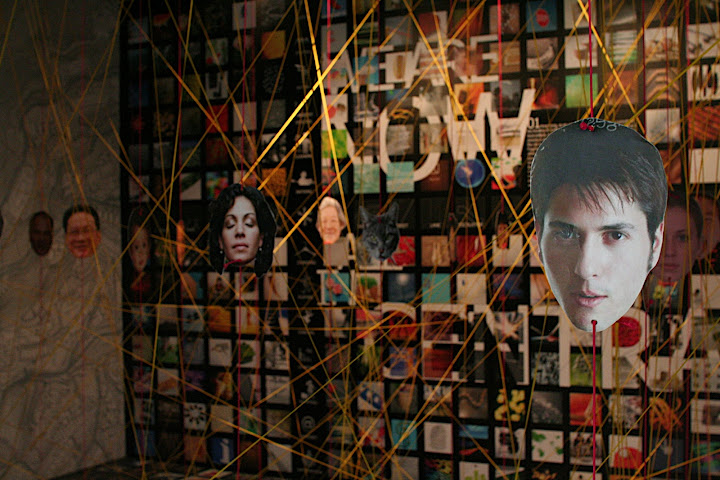
Here's a postmodern idea: that through our individualism we're networked together in complex ways (especially through IT).
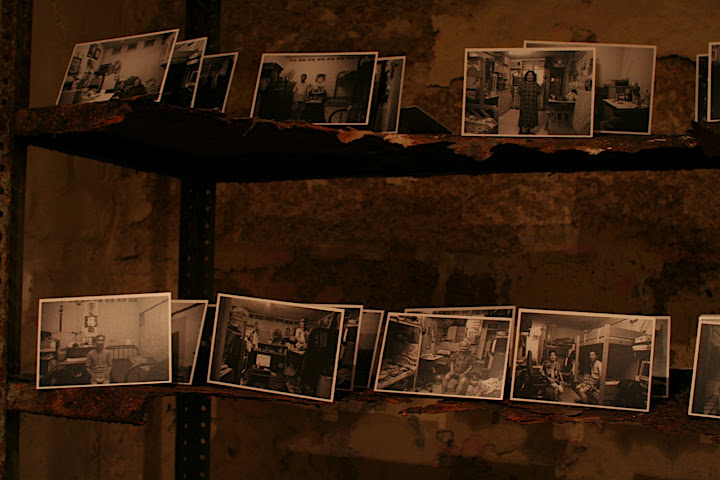
Probably the most interesting part of the biennale were the exhibits about Hong Kong people who'd been left out of the wealth and riches produced from Capitalistic urban planning.
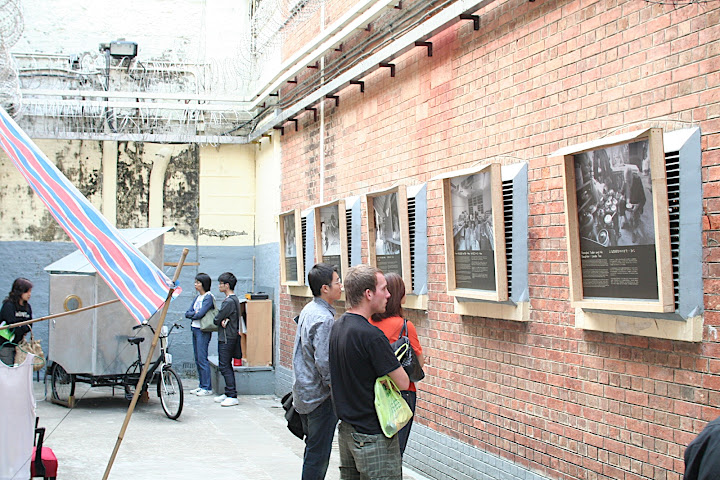
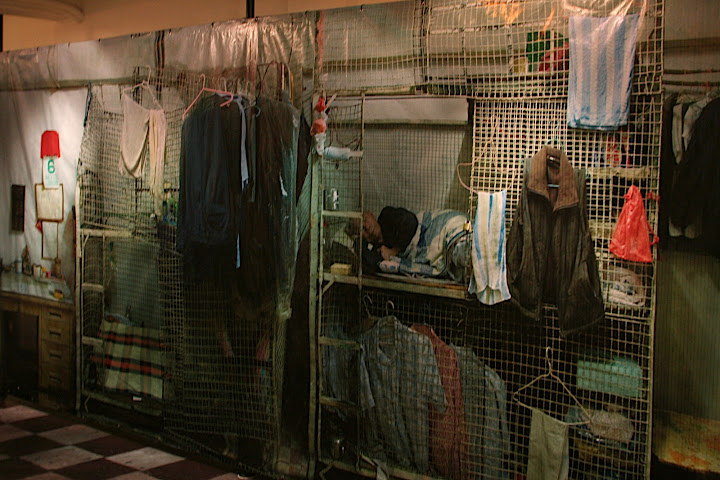
This alleyway, for example, had several features of homeless people. Have you ever walked by homeless people and wondered how their lives got to be this way? The stories told in this alleyway were in some cases about stubbornness and a refusal to adapt to the times, in some cases they were about uncontrolable circumstances that led to homelessness. Mostly it was a combination of both. For example one guy kept up his tailoring shop even though he wasn't making enough to support himself ever since business had crossed the border into China. Another guy said that he preferred sleeping in the streets over having his own place. He had company on the streets. And then there was even one guy who used to be rich, but lost everything after deindustrialization. These homeless were quite resourceful however, as you can see in the picture a mobile home constructed from scraps that can be transported by bike.
The biennale has closed, unfortunately. And now I'm not sure if anybody really knows what they will do with this former prison compound. Will they tear it down in the name of urban "refabrication"? Will they keep it as is, and turn it into a museum? Or will one of any number of other possibilities present itself and happen?

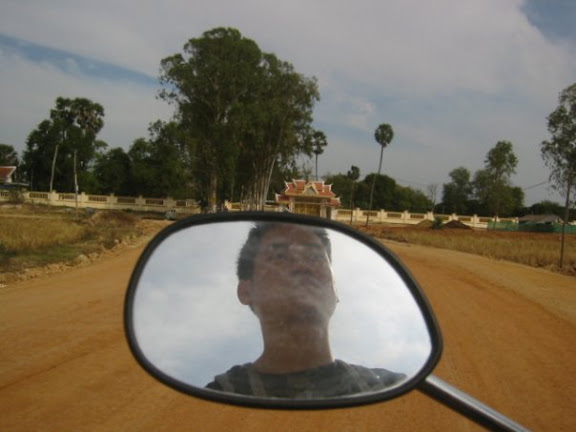 This blog is in meditative retreat until it can return to live a more meaningful life. Come back to visit at the end of the year (2008)
This blog is in meditative retreat until it can return to live a more meaningful life. Come back to visit at the end of the year (2008)